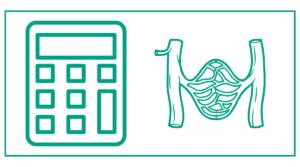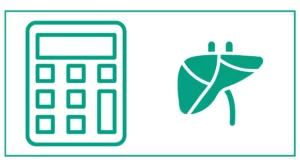Carb Cycling Calculator
Are you looking for an easy-to-use carb cycling calculator?
This carb cycling calculator helps you calculate your BMR, total energy expenditure, protein, fat, carbohydrate calories, and grams.
Enter your age, weight, and height, and choose your gender and activity level to use this calculator.
Our carb cycling calculator can help you speed up your weight/fat loss.

You might want to find your fat-burning zone or calculate your fasting time.
Carb cycling has gained popularity as a strategic approach to managing carbohydrate intake for various fitness and health goals. This article will explore the concept of carb cycling, its potential benefits, and how to effectively use a carb cycling calculator to optimize your diet plan.
What is Carb Cycling?
Carb cycling is a dietary approach that involves alternating between high-carb, moderate-carb, and low-carb days. This method aims to manipulate carbohydrate intake to support various physiological processes, including fat loss, muscle gain, and athletic performance.
The Science Behind Carb Cycling
The principle behind carb cycling is based on the body’s response to varying levels of carbohydrate intake. On high-carb days, the body replenishes glycogen stores, which can enhance workout performance and muscle recovery. Low-carb days, on the other hand, may promote fat burning and improve insulin sensitivity.
Benefits of Carb Cycling
Carb cycling can offer several potential benefits:
- Enhanced fat loss
- Improved muscle retention during weight loss
- Increased metabolic flexibility
- Better workout performance
- Hormonal balance, particularly for leptin and insulin
How to Use a Carb Cycling Calculator
A carb cycling calculator is a valuable tool for determining the appropriate carbohydrate intake based on individual factors such as body weight, activity level, and fitness goals.
Step 1: Input Your Personal Information
To use a carb cycling calculator, you’ll typically need to provide the following information:
- Age
- Gender
- Height
- Weight
- Activity level
- Fitness goals (e.g., fat loss, muscle gain, maintenance)
Step 2: Understand Your Results
The calculator will generate recommendations for your daily carbohydrate intake on different types of days:
- High-carb days
- Moderate-carb days
- Low-carb days
It may also provide suggestions for protein and fat intake to ensure a balanced diet.
Step 3: Plan Your Carb Cycling Schedule
Based on the calculator’s output, you can create a weekly carb cycling plan. A common approach is to align high-carb days with intense workout sessions and low-carb days with rest or light activity days.
Sample Carb Cycling Plan
Here’s an example of how a carb cycling plan might look:
- Monday (High-carb day): Leg workout
- Tuesday (Low-carb day): Rest or light cardio
- Wednesday (Moderate-carb day): Upper body workout
- Thursday (Low-carb day): Rest or light cardio
- Friday (High-carb day): Full-body workout
- Saturday (Moderate-carb day): Active recovery
- Sunday (Low-carb day): Rest
Adjusting Your Carb Intake
Remember that the carb cycling calculator provides a starting point. You may need to adjust your carb intake based on your body’s response and progress towards your goals.
Factors to Consider When Adjusting Carb Intake
- Energy levels
- Workout performance
- Rate of weight loss or gain
- Body composition changes
Macronutrient Balance in Carb Cycling
While carb cycling focuses on manipulating carbohydrate intake, it’s crucial to maintain a balance with other macronutrients.
Protein Intake
Protein intake typically remains consistent throughout the carb cycling process. A common recommendation is to consume 1.6-2.2 grams of protein per kilogram of body weight.
Fat Intake
Fat intake often inversely relates to carbohydrate intake. On low-carb days, fat intake may increase to compensate for the reduced calories from carbohydrates.
Carb Cycling for Different Goals
Carb Cycling for Fat Loss
For fat loss, a carb cycling approach might include more low-carb days to promote fat burning. The carb cycling calculator can help determine appropriate carb levels to maintain a calorie deficit while preserving muscle mass.
Carb Cycling for Muscle Gain
When focusing on muscle gain, the carb cycling calculator may suggest higher overall carb intake, with more frequent high-carb days to support muscle growth and recovery.
Carb Cycling for Athletic Performance
Athletes may use carb cycling to optimize performance, with high-carb days aligned with intense training or competition days.
Common Mistakes to Avoid in Carb Cycling
- Neglecting overall calorie intake
- Not adjusting protein and fat intake accordingly
- Failing to align carb intake with activity levels
- Overcomplicating the plan
- Not giving the approach enough time to show results
Incorporating a Carb Cycling Calculator into Your Fitness Journey
A carb cycling calculator can be a valuable tool in your fitness arsenal. Here’s how to make the most of it:
- Use it as a starting point for your carb cycling plan
- Regularly reassess your needs as your body composition changes
- Combine the calculator’s recommendations with personal experimentation
- Track your progress and adjust as necessary
Conclusion
Carb cycling can be an effective strategy for various fitness goals, from fat loss to improved athletic performance. A carb cycling calculator provides a personalized approach to determining optimal carbohydrate intake. By understanding how to use this tool effectively and applying the principles of carb cycling, you can create a tailored nutrition plan that supports your fitness objectives.
Remember, while a carb cycling calculator offers valuable guidance, it’s essential to listen to your body and make adjustments as needed. Consulting with a nutrition professional can also help ensure that your carb cycling plan aligns with your individual needs and health status.
References
- Work, H. D. C. C. The Science Behind Carb Cycling
- Agin, B. Intermittent Fasting, Carb Cycling, and Weight Management.
- Sjödin, A. M., Forslund, A. H., Westerterp, K. R., Andersson, A. B., Forslund, J. M., & Hambraeus, L. M. (1996). The influence of physical activity on BMR. Medicine and Science in Sports and Exercise, 28(1), 85-91.
- Henry, C. J. K. (2005). Basal metabolic rate studies in humans: measurement and development of new equations. Public health nutrition, 8(7a), 1133-1152.





